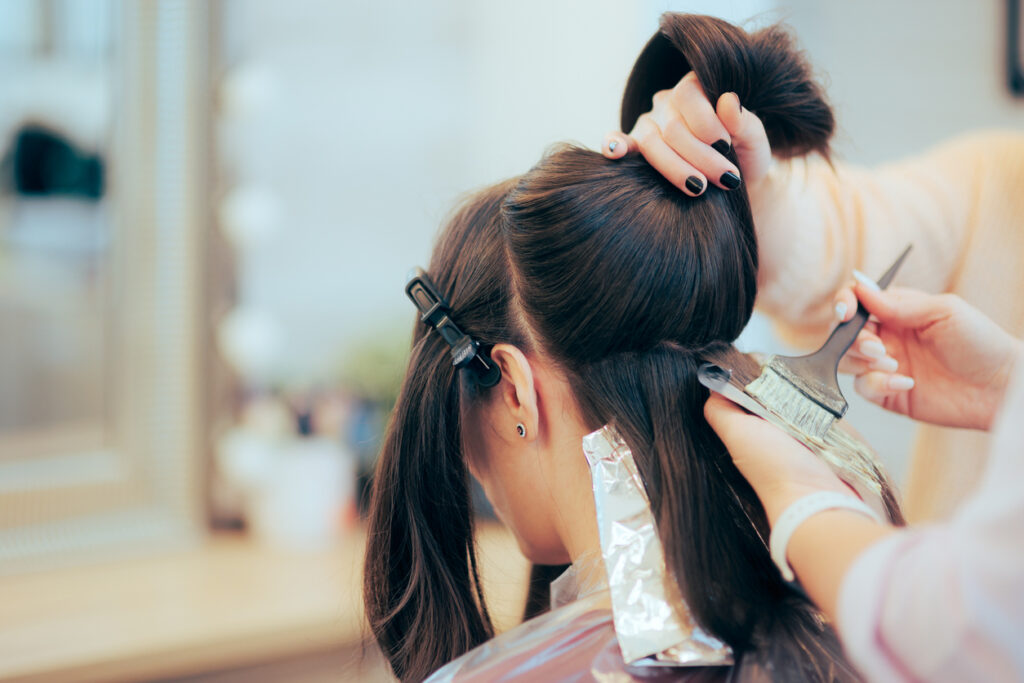And the 2025 allergen of the year is…toluene-2,5-diamine sulfate (PTDS).
Each year, the American Contact Dermatitis Society (ACDS) names an Allergen of the Year to raise awareness about common allergens.
Toluene-2,5-diamine sulfate (PTDS), also known as toluene diamine sulfate or 2,5-diaminotoluene sulfate, is an aromatic amine that can be used as a hair dye alternative for people who are allergic to paraphenylenediamine (PPD). It is primarily found in hair dye and bleach-toner formulations, but PTDS may also be used in developing agents for color photography and to dye textiles and furs.
People may develop contact allergy to PTDS, and it is often omitted from standard patch test screening series, possibly leading to underdiagnosis. The North American Contact Dermatitis Group (NACDG) showed positivity in 1.6% and 1.7% of routinely patch-tested patients. Patch test results from the European extended baseline series showed PTD positivity of 1.4%, and a study of the Australian Baseline Series showed PTDS positivity of 12.9%, according to an article in Dermatitis. ( (Due to the similarity between PTDS and PTD, PTD data will be reported where PTDS-specific data are missing in this publication.)
Hairdressers and people who dye their own hair are at increased risk of sensitization to hair dyes like PTDS, the study authors note.
“Given the recent North American data as well as the importance of PTDS as an alternative hair dye option for some patients with PPD contact allergy, we advocate that PTDS be considered for inclusion in the next ACDS core screening series update,” the researchers urge.
Most at risk of reacting to toluene-2,5-diamine sulfate (PTDS) are people who get an itchy scalp after getting their hair dyed, says Matthew Zirwas, MD, a Dermatologist in Bexley, OH. “A vast majority of these patients are allergic to para-phenylenediamine (PPD),” he says. “PPD-free hair dye is often empirically recommended to them, but most PPD-free hair dye has PTDS, and about half of the people with PPD allergy will also be allergic to PTDS.”
If a patient is allergic to hair dye, assume they are allergic to PPD and PTDS, unless they have been patch tested to PTDS specifically.
“If they are allergic to PPD but not to PTDS, they can use PTDS-based dye (Madison Reed is one example), but they have a significant likelihood of eventually becoming allergic to PTDS anyway,” he says.
“My preferred product for people with hair dye allergy is Wella Koleston Perfect,” Dr. Zirwas says. “As far as I can tell, all the shades and products in that line have Me-PPD, which is a chemically modified PPD that is much less allergenic than regular PPD, and my PPD-allergic patients have had great success switching to it, with everyone either having no reaction to it or having a much less intense reaction to it than to PPD.”
The Allergen of the Year is chosen by a committee at the ACDS, Dr. Zirwas explains. “The committee considers a variety of factors when making their choice,” he says. “They look at how common allergic reactions to a particular substance have become, they also assess whether the allergen is emerging as a problem in some particular product that is on the rise or if it’s something that’s been overlooked and they just think awareness should be raised. “
Past ACDS Allergen of the Year Winners
2024- Sulfites
2023 – Lanolin
2022 – Aluminium
2021 – Acetophenone Azine
2020 – Isobornyl Acrylate
2019 – Parabens (Non) Allergen


